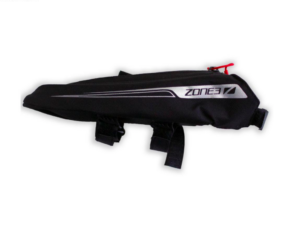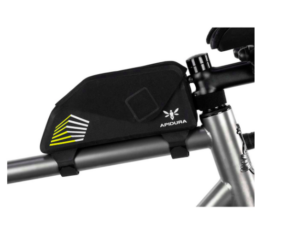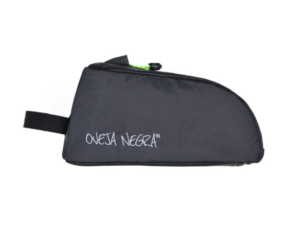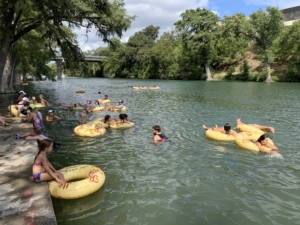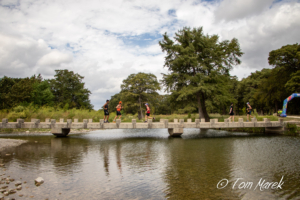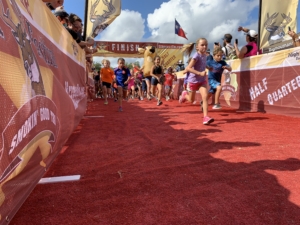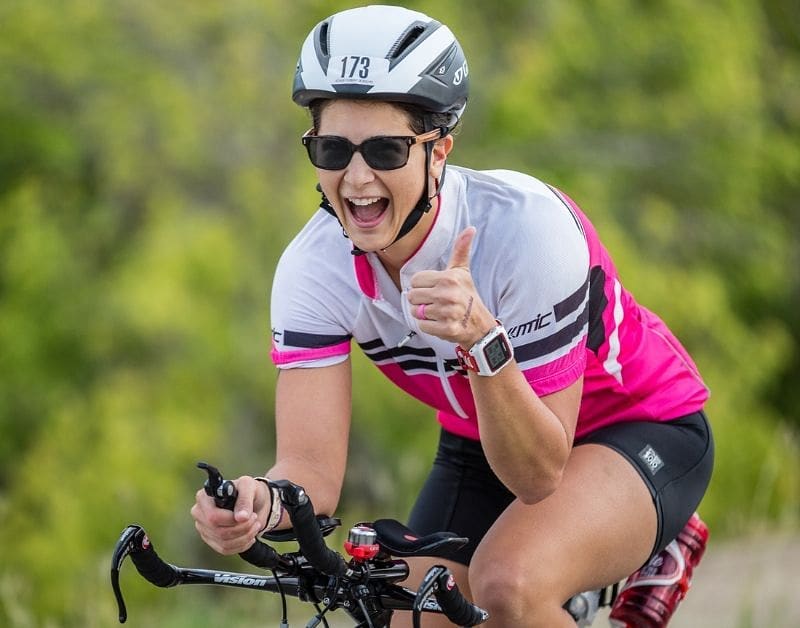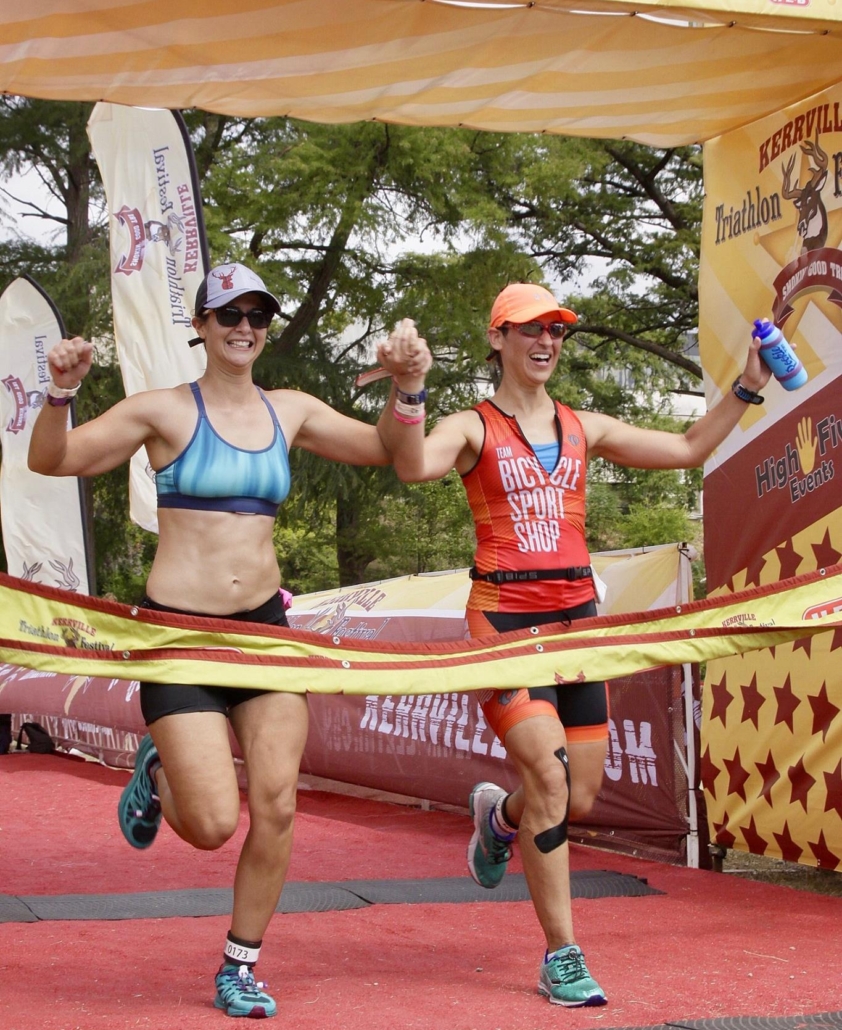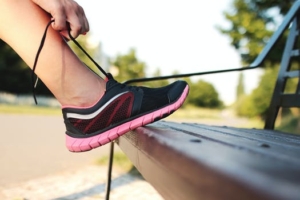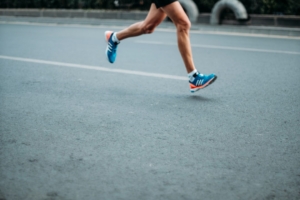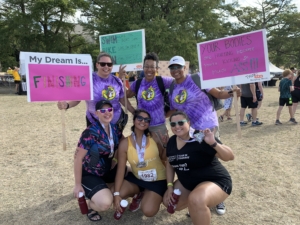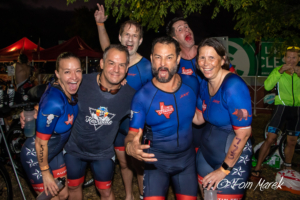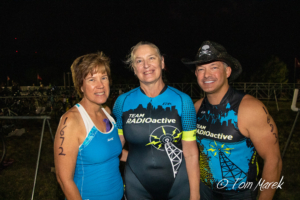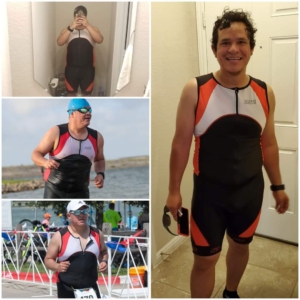More than 1800 triathletes, the largest field in event history, registered for The Most Scenic Triathlon in Texas
Nearly 5000 triathletes and their friends and family traveled to Kerrville, Texas, for the 10th annual Kerrville Triathlon Festival. More than 1800 triathletes from 20 states, the largest field in event history, registered for the Most Scenic Triathlon in Texas. Participants gave their all during a picture-perfect weekend on a course highlighted by swimming in Nimitz Lake, cycling through the Texas Hill Country, and running along the Guadalupe River.
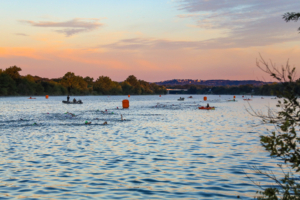
Stunning view of Nimitz Lake during the swim. Credit: Scott Flathouse
After crossing the finish line, participants were treated to fajitas and cold beer from Pint and Plow, snacks. May took advantage of an opportunity to recover in the refreshing waters of the Guadalupe River. Kerrville Tri also launched best pricing for 2022, which ends on Monday, October 4th.
“I couldn’t have asked for a better experience at my first quarter-distance triathlon,” said Kellie Dewveall, who became the first blind triathlete to complete the Quarter distance (4:17:47). “High Five Events was super accommodating which allowed me to feel more comfortable. And the participants and spectators overwhelmed me with their never-ending support!”
Something for everyone
Kerrville Tri offered distances and events for triathletes of all levels and abilities. The Rookie Sprint distance, aquabike, relay, and kids fun run took place on Saturday, September 25th. Quarter distance, quarter aquabike, half distance, half aquabike, and half relay took place on Sunday, September 26th. Participants picked up their packet at the Kerrville Triathlon Expo, which was free and open to the public. It took place on September 24-25 at the host hotel, Inn of the Hills Hotel. The national anthem was sung by Master Sergeant Brandon Addison on both days, including before he competed in the Rookie Sprint. Before each distance began, members of the Austin Tri Club led the pre-race warm-up, pumping up participants before their swim.
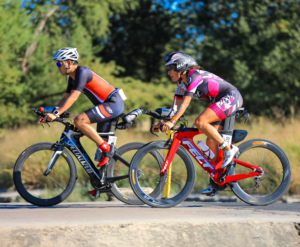
Cyclists cruise through the Texas Hill Country. Credit: Scott Flathouse
“This was my first Kerrville Tri and it was so well put together and by far the most seamless race I’ve ever done,” said Karina Wilson, who traveled from College Station and placed 2nd in the female 25-29 age group in the Rookie Sprint on Saturday (1:15:12) and volunteered with her fiance on Sunday. “We made a weekend out of this and really enjoyed the city of Kerrville. I love that Kerrville Tri offers different distances and events to make it inclusive for triathletes of all levels!”
Unforgettable race weekend
Ben Rawson (56:03), of Austin, Texas, won Saturday’s Rookie Sprint while Fernanda Bau (58:50), of Pflugerville, Texas, won the female division. Sunday’s winners and their times follow: Quarter – female winner, Allison Koch (2:24:28), male winner, Adrian Cameron (2:07:57); Half – female winner, Brandi Swicegood (4:54:29), male winner, Alex Sharp (4:28:12). Results for Saturday and Sunday are available.
“This was such an amazing day to enjoy this beautiful course aptly named The Most Scenic Triathlon in Texas,” said Swicegood, who’s coached by former professional triathlete Paul “Barny” Matthews under Julie Dibens Coaching. “The event was so well-organized with amazing views of the Texas Hill Country and spectator support seemingly everywhere!”

Swicegood (right) poses after becoming the female Half distance champ. Credit: Scott Flathouse
Participants received limited-edition 10th-anniversary swim floats, tri-blend shirts, reusable water bottles, belt buckle finisher medals, personalized race bibs, and Zone 3 silicone swim caps. A post-race meal of HEB fajitas, prepared by Jack and Adam’s Fredericksburg’s employees, awaited participants at the finish line festival. They’ll also get a free, personalized finish line video from FinisherPix to commemorate the 10th anniversary. Kerrville Tri is a USAT-sanctioned event. It provided professional timing and offered professional photography. A great volunteer crew, hundreds of supportive spectators, and an energetic finish line festival made race weekend memorable for everyone.
Big thank you
The Kerrville Triathlon would like to thank the City of Kerrville, Kerrville Fire Department, Kerrville Police Department, Kerr County Sheriff’s Department, Kerrville Convention and Visitors Bureau, and sponsors H-E-B, Peterson Health, Jack and Adam’s Fredericksburg, Pint and Plow Brewing Company, Grape Juice, Zone3, Peak Fitness, MO-RANCH, Hill Country Bicycle Works, Mamacita’s, and Gatorade.




